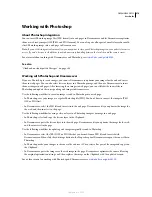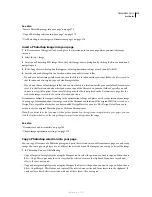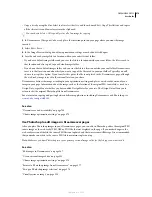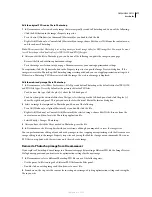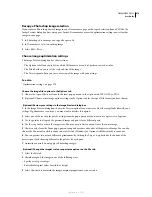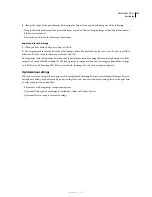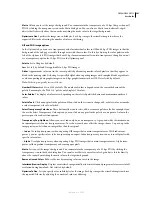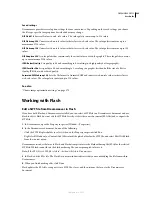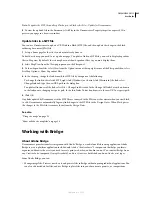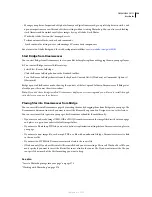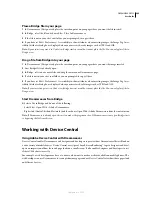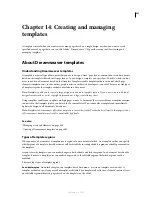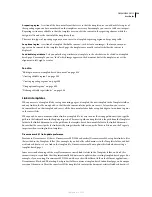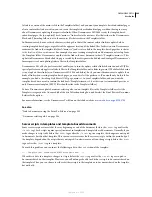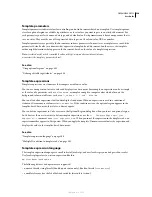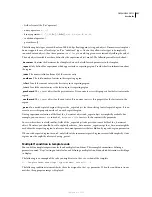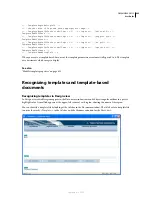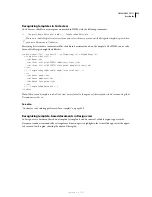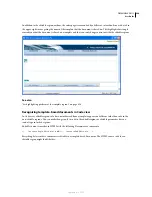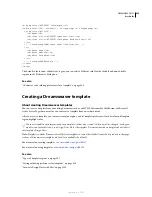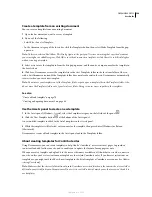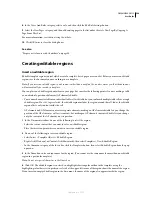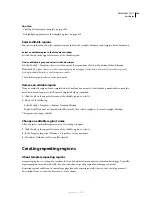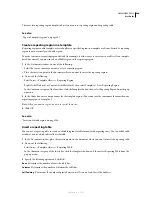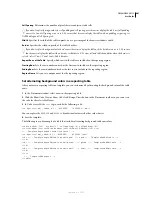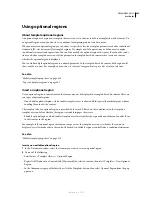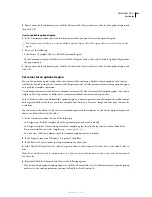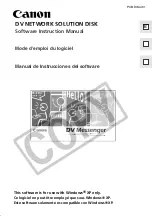
DREAMWEAVER CS3
User Guide
388
A repeating region
A section of the document layout that is set so that the template user can add or delete copies of
the repeating region in a document based on the template as necessary. For example, you can set a table row to repeat.
Repeating sections are editable so that the template user can edit the content in the repeating element, while the
design itself is under the control of the template author.
There are two types of repeating regions you can insert in a template: repeating region and repeating table.
An optional region
A section of a template that holds content—such as text or an image—that may or may not
appear in a document. In the template-based page, the template user usually controls whether the content is
displayed.
An editable tag attribute
Lets you unlock a tag attribute in a template, so the attribute can be edited in a template-
based page. For example, you can “lock” which image appears in the document but let the template user set the
alignment to left, right, or center.
See also
“Editing content in a template-based document” on page 414
“Creating editable regions” on page 398
“Creating repeating regions” on page 399
“Using optional regions” on page 402
“Defining editable tag attributes” on page 404
Links in templates
When you create a template file by saving an existing page as a template, the new template in the Templates folder,
and any links in the file are updated so that their document-relative paths are correct. Later, when you create a
document based on that template and save it, all the document-relative links are updated again to continue to point
to the correct files.
When you add a new document-relative link to a template file, it’s easy to enter the wrong path name if you type the
path into the link text box in the Property inspector. The correct path in a template file is the path from the Templates
folder to the linked document, not the path from the template-based document’s folder to the linked document.
Ensure that the correct paths for links exist by using either the folder icon or the Point-to-file icon in the Property
inspector when creating links in templates.
Dreamweaver 8.01 link update preference
Previous to Dreamweaver 8 (that is, Dreamweaver MX 2004 and earlier), Dreamweaver did
not
update links to files
that resided in the Templates folder. (For example, if you had a file called main.css in the Templates folder, and had
written href=”main.css” as a link in the template file, Dreamweaver would not update this link when creating a
template-based page.)
Some users took advantage of the way Dreamweaver treated links to files in the Templates folder, and used this
inconsistency to create links that they intentionally did not want to update when creating template-based pages. For
example, if you are using Dreamweaver MX 2004, and have a site with different folders for different applications—
Dreamweaver, Flash, and Photoshop. Each product folder contains a template-based index.html page, and a unique
version of the main.css file at the same level. If the template file contains the document-relative link href=”main.css”
September 4, 2007

